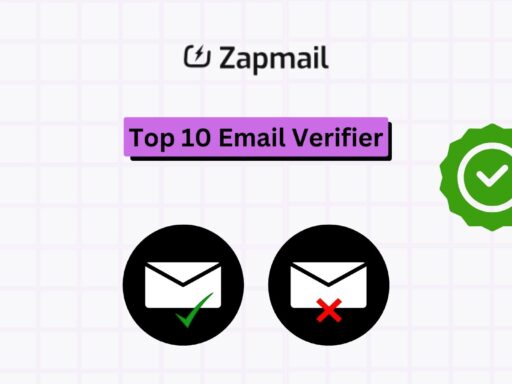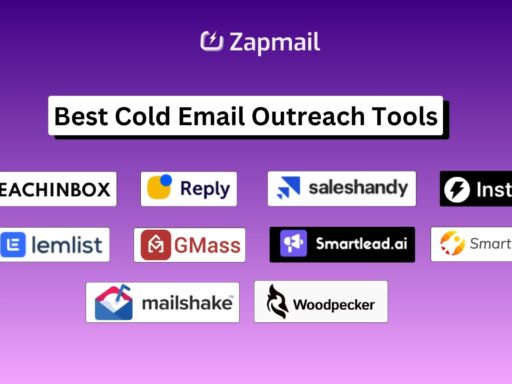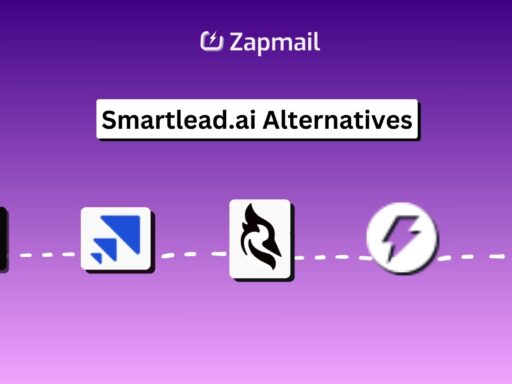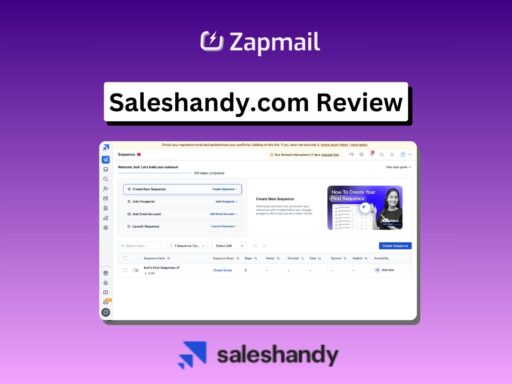In today’s job market, employers get about 250 resumes for each job. A well-written email can make a big difference. Our data shows over 6 million job seekers have used our tools to help them apply successfully. We suggest sending your resume email early on Monday before 8 am for the best results.
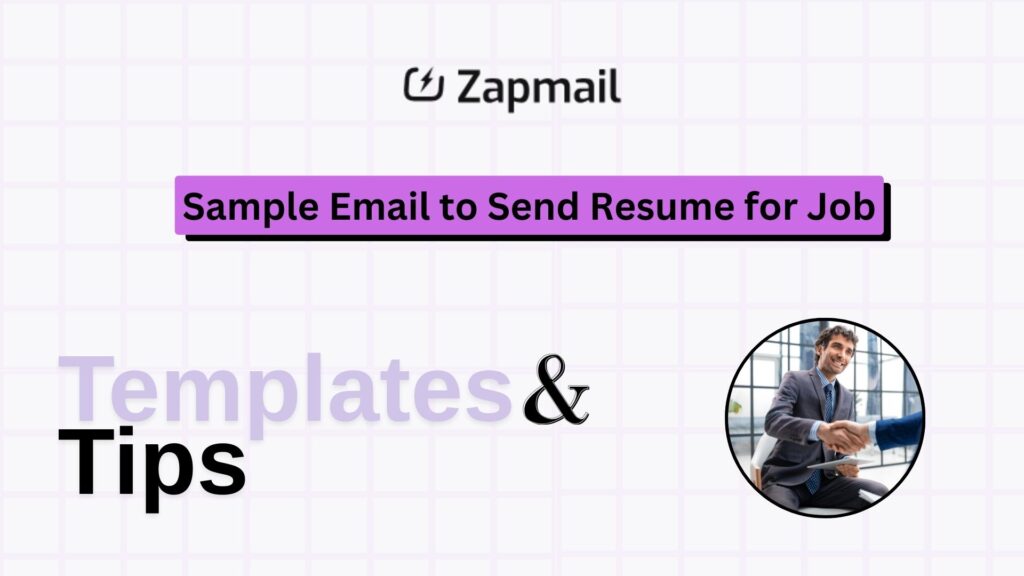
Writing a professional, brief, and informative email is key. Every part of your email, from the subject line to the signature, matters. In this guide, we’ll show you how to make your resume email stand out and highlight your skills.
Key Takeaways
- Sending a resume via email is a crucial step in job applications, serving as the first impression for potential employers.
- The preferred file format for resume and cover letter attachments is .pdf or .doc, and files should not exceed 10MB in size.
- The article suggests keeping the email short, informative, and professional, with a clear subject line and a professional email address.
- Employers can expect to receive around 250 resumes per job posting, so a well-crafted email can help your application stand out.
- Sending the email early on a Monday morning before 8 am can maximize its effectiveness.
Understanding the Importance of Professional Email Communication
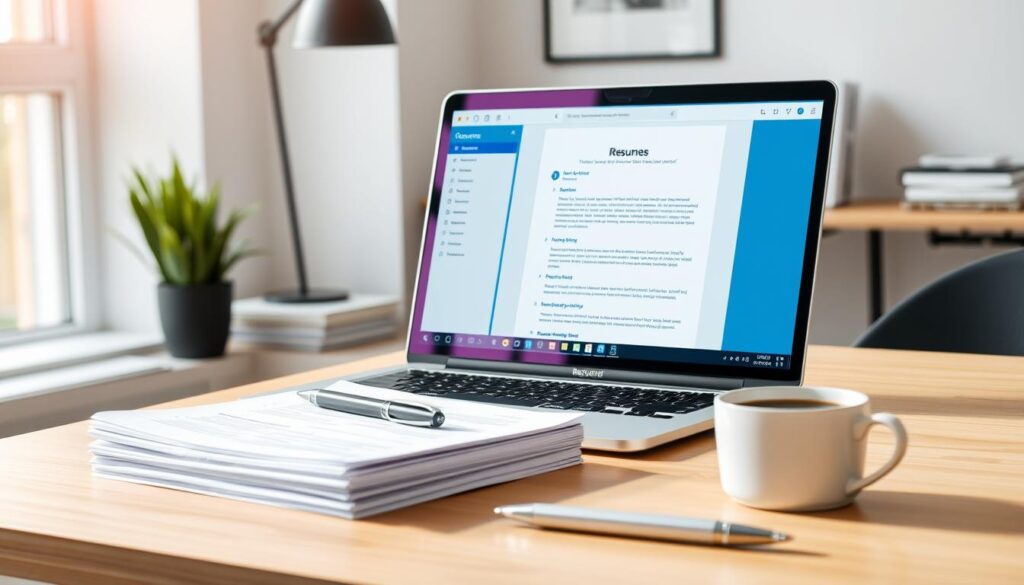
In today’s digital job market, professional email communication is key. It helps you make a lasting impression and boost your chances of getting an interview. With many applications for one job, a well-written email can make your resume stand out.
First Impressions in Digital Job Applications
Recruiters quickly scan each application, usually in just 7 seconds. Your email is your chance to connect personally and share more than a web form allows. A well-written email shows your skills and interest in the role, helping you move forward.
Impact of Email Etiquette on Job Success
Good email etiquette is crucial for job success. Studies show 77% of employers value communication skills when choosing candidates. A professional email address and proper formatting can show you’re competent. But, bad emails or technical errors might get you ignored.
Understanding the value of professional email communication can help you craft a standout resume email. This increases your chances of getting an interview. The next sections will give you tips and templates to improve your job application email.
Essential Components of a Resume Email
When you apply for jobs, sending a good resume email is key. It should have a clear structure to grab the recruiter’s attention. This way, they are more likely to look at your resume.
The main parts of a resume email are:
- Clear, Concise Subject Line: Start with a subject line that grabs attention. For example, “Experienced Digital Marketer Applying for Marketing Manager Role”.
- Professional Greeting: Use a respectful greeting like “Dear Hiring Manager” or “Hello [Recruiter’s Name]”.
- Brief Introduction: Briefly introduce yourself and mention the job you’re applying for. Highlight your relevant skills and experience.
- Elevator Pitch: Give a short, engaging summary of your key skills and achievements. Explain why you’re the best fit for the job.
- Relevant Experience: Focus on your most relevant work experience and achievements. Make sure they match the job’s requirements.
- Personal Information: Include your contact details like your name, phone number, and professional email.
- Call to Action: Ask the recruiter to review your attached resume and cover letter. Show your eagerness to discuss further.
- Closing: Finish with a formal closing, such as “Sincerely” or “Best regards”.
By including these key elements, your resume email will clearly show your qualifications. It will also engage the recruiter, boosting your chances of getting noticed.
Crafting the Perfect Subject Line for Your Resume Email
The subject line of your resume email is the first thing recruiters and hiring managers see. It’s crucial to get it right. A well-crafted subject line can make your application stand out and increase the chances of your email being opened and read.
Subject Line Formats and Examples
When writing your resume email subject line, aim for clarity and professionalism. Include the job title you’re applying for, along with a reference number if applicable. For example:
- “Job application – Marketing Director – REF000111”
- “Application for Graphic Designer role – ABC123”
- “Resume for Software Engineer position – [Company Name]”
You can also consider incorporating keywords related to your qualifications or industry. This makes your email more filter-friendly for modern applicant screening processes.
What to Avoid in Subject Lines
Steer clear of informal language, abbreviations, or overly creative subject lines in your resume email. Keep it professional and straightforward. This ensures your email is easily identifiable and not mistaken for spam. Avoid common mistakes like misspellings, as these can undermine your credibility.
Remember, recruiters and hiring managers typically spend only a few seconds skimming a resume. A clear and concise subject line can make all the difference in getting your application noticed and opened.
Professional Email Greetings and Salutations
Starting your email right can greatly impact your first impression. It’s key to use professional greetings and salutations for job applications. Your email’s opening should be friendly yet formal.
Start with a polite greeting like “Dear [Hiring Manager’s Name]” or “Dear Hiring Manager” if you don’t know their name. Steer clear of too casual greetings, as they can seem unprofessional. Briefly introduce yourself and state why you’re emailing, like applying for a job or following up.
Use the company name instead of “your” or “the” when talking about the company. This keeps your tone professional and impersonal, fitting for job emails. Remember, your email’s start sets the tone for the whole interaction.
- Use professional greetings like “Dear [Hiring Manager’s Name]” or “Dear Hiring Manager”
- Avoid overly casual greetings to maintain a formal, respectful tone
- Keep the introduction concise, not exceeding three sentences
- Refer to the company by name instead of using possessive pronouns
By following these tips, you can create professional email greetings and salutations. This will help you make a good impression and boost your job application success.
Sample Email to Send Resume for Job
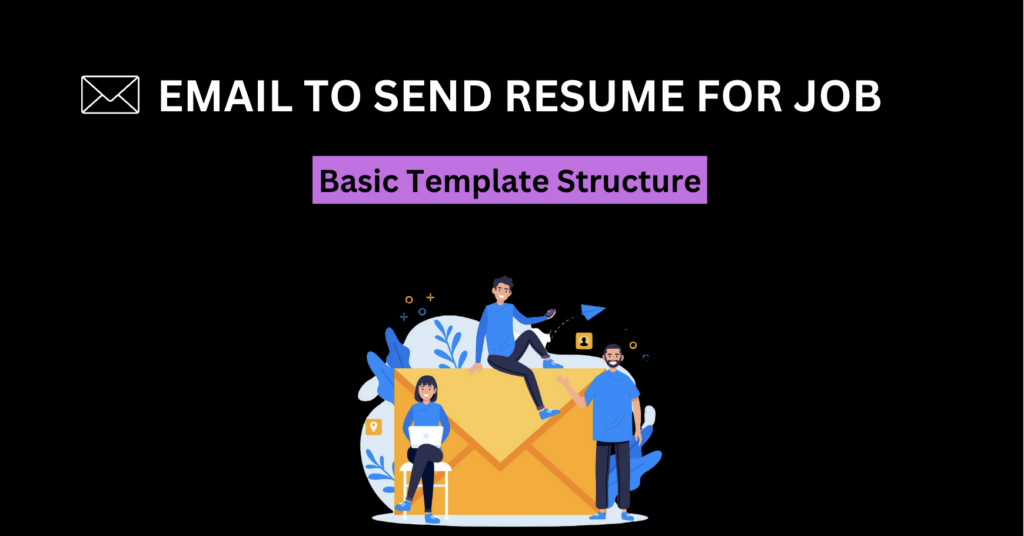
Basic Template Structure
Sending a professional email with your resume is key in applying for a job. A well-structured email can leave a strong impression. It can also boost your chances of catching the hiring manager’s eye. The basic template includes several important parts:
- A clear and concise subject line that mentions the job title or reference number.
- A professional greeting, such as “Dear Hiring Manager” or “Dear [Hiring Manager’s Name]”.
- A brief introduction highlighting your interest in the position and your relevant qualifications.
- A short pitch about your skills, experience, and how you can contribute to the company’s needs.
- A mention of the attached resume and cover letter (if applicable).
- A professional closing, such as “Sincerely” or “Best regards,” followed by your name.
Customization Guidelines
To make your resume email stand out, personalize it for each job application. Customize the email by:
- Mentioning specific qualifications and experiences that align with the job description.
- Expressing your enthusiasm for the role and your interest in the company.
- Tailoring your pitch to the company’s needs and highlighting how you can contribute to their success.
- Avoiding generic or one-size-fits-all emails, as they are less likely to capture the hiring manager’s attention.
By following these guidelines and using a sample email to send resume as a template, you can create a resume email template that showcases your professionalism, qualifications, and fit for the job.
Writing an Effective Email Body
When you apply for a job, your email body is your first chance to impress the hiring manager. It should be short but full of important details. Start with a brief hello, mention the job you’re applying for, and list your most relevant skills and achievements.
Show your real interest in the company and the job. Say you’ve attached your resume and cover letter. And thank them for looking at your application. Keep your paragraphs short and to the point. This makes your email easy to read and scan.
- Aim for a word count between 100-200 words in the email body.
- Avoid lengthy, rambling paragraphs that can overwhelm the reader.
- Tailor the email content to each job application, showcasing your specific fit for the role.
- Use a professional and friendly tone to establish a positive impression.
The email body should give the hiring manager enough to want to look at your resume. But it shouldn’t be too long. By finding the right balance, you can make your email body for job application and writing resume email content stand out in a crowded inbox.
Best Practices for Resume Attachments
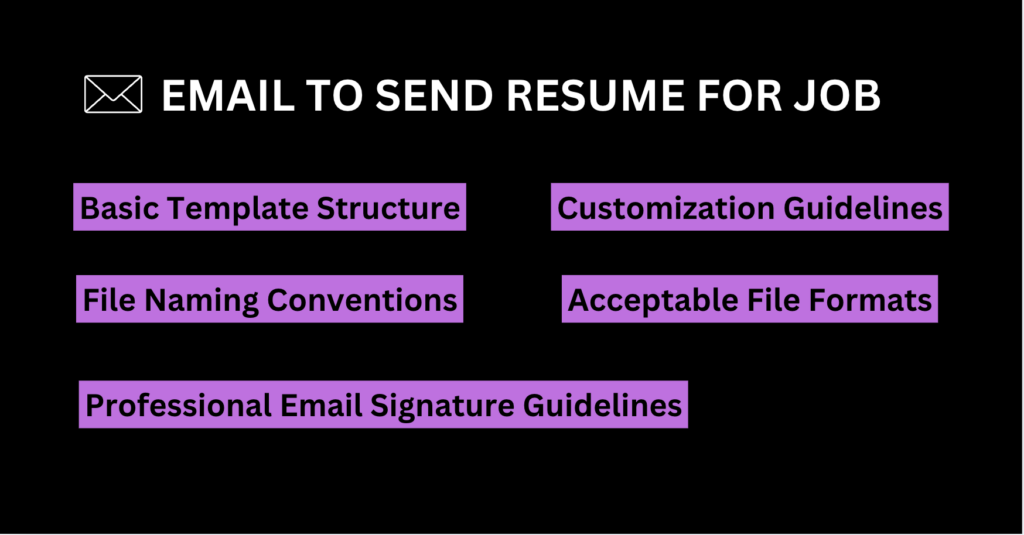
When you send your resume via email, using the right file names and formats is key. These practices show you’re detail-oriented and professional. This can help you stand out to employers.
File Naming Conventions
Your resume file name should be clear and professional. A good choice is FirstName-LastName-Resume.pdf. It’s easy for the recipient to spot your application and keeps things organized.
Avoid generic names like “resume.pdf” or “document.docx.” They lack the personal touch you want to show.
Acceptable File Formats
- PDF (Portable Document Format): This is the most accepted format for resumes. It keeps your formatting and layout consistent across devices and software. It’s best to save your resume as a PDF unless told otherwise.
- Microsoft Word (.doc or .docx): Some employers might ask for a Word document. So, it’s smart to have your resume in this format too.
Keep your resume file size under 10MB to avoid email attachment issues. Also, double-check that your resume and any other documents are attached before sending.
Professional Email Signature Guidelines
Your email signature can leave a lasting impression on employers. It shows your contact info and reinforces your personal brand. A well-crafted signature can make you stand out, especially when applying for jobs or following up on interviews.
Here are some key guidelines for a professional email signature:
- Include your full name, current job title (if applicable), and contact information such as phone number and email address.
- Optionally, you can also add your LinkedIn profile or personal website URL to showcase your online presence and professional background.
- Keep the signature simple and concise, avoiding excessive information or graphics that could appear cluttered.
- Ensure that all the contact details in your email signature are up-to-date and easily readable.
Your professional email signature is a key part of your job application email. It can make a big difference in how employers see you. By following these tips, you can create a signature that shows your professionalism and makes your application more memorable.
Timing Your Resume Email for Maximum Impact
Timing your resume email is key to getting noticed. Experts say some days and times are better than others for job seekers.
Best Days and Times to Send
Experts recommend sending your resume on Tuesdays, Wednesdays, or Thursdays. These days are better because there’s less email than on Mondays and Fridays.
The best time to send your resume is early morning, from 6 a.m. to 10 a.m. Hiring managers check their emails then and might consider your application quickly.
Don’t send your resume on Mondays. Inboxes are full of weekend emails, making yours hard to find. Fridays can be unpredictable, as some managers are wrapping up for the weekend, while others are catching up.
It’s important to follow good email etiquette. Use a clear subject line, address the recipient by name, and include a brief message about your qualifications. Also, attach your resume in PDF format to make a good impression.
Remember, the best time to send a resume email is early in the week and in the morning. This way, you can make your resume more visible and increase your chances of getting an interview.
Following Up After Sending Your Resume
Creating a great resume is just the start of your job search. It’s key to follow up with employers after applying. Research shows 56% of job seekers don’t get a response from employers within weeks. A thoughtful follow-up email can show you’re really interested and keep you in their thoughts.
When should you send a follow-up email? Wait at least two weeks before reaching out. Employers like emails for quick responses and keeping records. If you don’t get a reply, wait a week before trying again.
Your follow-up email should be short and polite. Reiterate your interest in the job and mention your previous application. Don’t talk about pay or vacation days yet. Instead, express your excitement and any new qualifications or updates.
Check your email for typos and grammar mistakes. Have any needed documents ready. Include your contact info, like an email and phone number, for easy communication.
By following these tips for a follow-up email after resume and job application follow-up, you can stand out in the job market. This could lead to the next step in the hiring process.
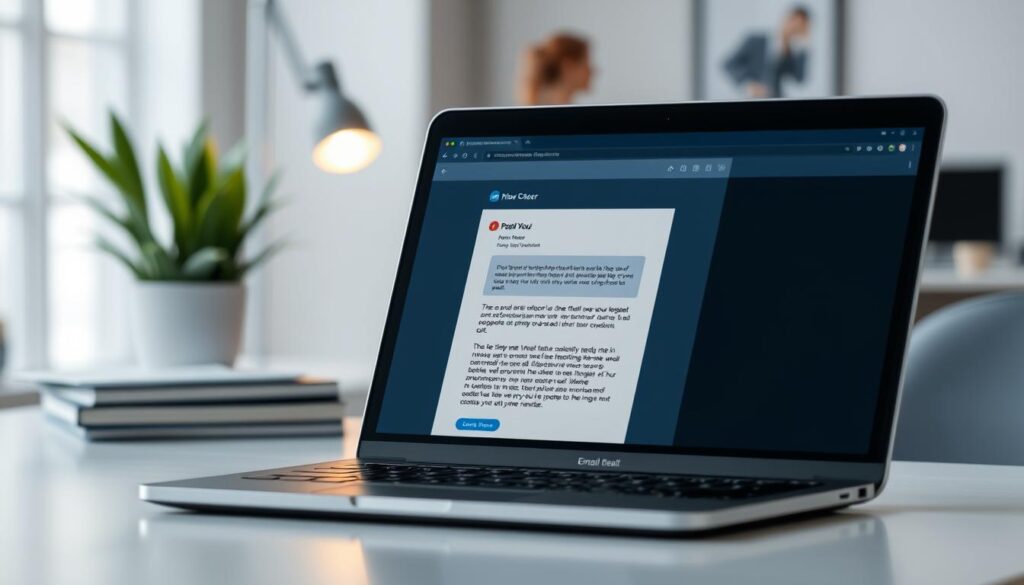
Common Email Mistakes to Avoid
When you apply for jobs, your first impression is often through your resume email. To boost your chances, avoid these common mistakes in your job application email.
Technical and Formatting Errors
Spelling and grammar mistakes can hurt your chances of getting an interview. Industry data shows 67% of recruiters might not consider you if your email has errors. Also, forgetting to attach required documents can cut your response chances by up to 50%.
Using an unprofessional email address is another big mistake. It can make employers 75% less likely to respond positively.
Content-Related Pitfalls
Applying to many jobs with the same generic email is a mistake. Tailoring your emails for each job can increase your response chances by 30%. Also, emails with clear subject lines get opened 40% more than generic ones.
Trying to be too casual or funny in your email can also fail. It’s important to keep a professional tone and avoid unprofessional language.
By avoiding these job application email mistakes and resume email errors, you can stand out in the job market. This can help you get an interview.
Remember, paying attention to detail and being professional can make a great first impression with employers.
Tailoring Your Email for Different Industries
When sending industry-specific resume emails, remember that one size doesn’t fit all. To boost your chances of getting interviews, tailor your emails to fit each industry’s culture and needs. Do your research on the company and industry norms before you start writing. Then, adjust your tone and content to match.
In creative fields, you might have more freedom with design and a casual tone. But, traditional industries often call for a more formal style. Emphasize your skills and experiences that match the job you’re applying for. This personal touch can really make a difference, as 82% of employers like resumes that are tailored to the industry and role.
- Use industry-specific keywords to get noticed by 72% more, thanks to applicant tracking systems.
- Show off your achievements with numbers, as 68% of hiring managers look for this in resumes.
- Include any relevant certifications or training, as 80% of job ads require specific qualifications.
Customizing your job application materials, like your resume email, can up your chances of an interview by 64%. Remember, resumes with tailored emails are 50% more likely to catch a hiring manager’s eye. And 68% of them will check your cover email before your resume.
By knowing what each industry wants, you can write resume emails that really stand out. This focus on detail can be the key to finding your next job.
Mobile-Friendly Email Formatting Tips
In today’s fast-paced job market, your resume email must be professional and mobile-friendly. With more remote work and job searches on the go, making a strong impression is key. Here are tips to make your job application email easy to read and engage with, even on small screens.
- Keep it concise: Brevity is key for mobile-friendly emails. Use short paragraphs and bullet points to highlight important info.
- Choose a simple, readable font: Avoid fancy fonts that may not show well on mobiles. Go for a clean, sans-serif font like Arial or Calibri.
- Minimize formatting: Complex formatting can get messy on small screens. Keep your email simple and straightforward.
- Optimize your email signature: Make sure your email signature is compact. Include only essential contact info.
- Test before sending: Preview your email on different mobile devices. Make sure it looks and works right. Adjust as needed.
By following these mobile-friendly resume email and job application email formatting tips, you can boost your chances of getting noticed. Even when the hiring manager is on the move.
Professional Email Address Requirements
When you apply for jobs, using a professional email address is key. It shows your professionalism and credibility. Your email is often the first thing employers see, so it’s important to make a good impression.
Use your first and last name in your email address, like [email protected] or [email protected]. Stay away from nicknames, numbers, or anything unprofessional. If needed, make a new email just for job applications.
Think about using a custom domain if your field values personal branding. For example, johndoe.com or johndoeconsulting.com looks better than a generic email address.
- Use a simple, easy-to-remember format like [email protected]
- Avoid using numbers, symbols, or words that could be perceived as unprofessional
- Create a separate email account for job applications if your current address is not professional
- Consider a custom domain for personal branding, especially in certain industries
Your email address shows your professionalism. Choose wisely to impress potential employers.
Conclusion
Making a good resume email is key to getting hired. Use a professional email address and write a clear subject line. Keep your email short and to the point, attach documents correctly, and add a professional signature.
Customize each email for the job and company you’re applying for. Check your email for mistakes and send it at the right time. This will help you get noticed and land the job you want.
Following resume email tips and being professional can make you stand out. With the right approach, your job application email success will grow. This opens doors to new opportunities.
Don’t forget, a well-made resume email can start your next career chapter. Stay focused, keep trying, and be flexible. You’ll surely impress potential employers.
FAQ
Sending a resume via email is key in job applications. It’s the first impression for employers. A professional, concise, and informative email can make your application stand out.
A good resume email has a clear subject line and a professional greeting. It should include a brief introduction and a statement about the job. Add a short “elevator pitch” and relevant experience.
Include personal information, contact details, and an offer to answer questions. Don’t forget to ask about next steps.
Your subject line should be clear and informative. Include “Job application” or “Application for”, the job title, and a reference number if you have one. Keep it professional and straightforward.
The email body should be concise yet informative. Start with a brief introduction and mention the position. Highlight your key qualifications and mention the attached resume and cover letter.
Name attachments clearly and use PDF format unless specified otherwise.
